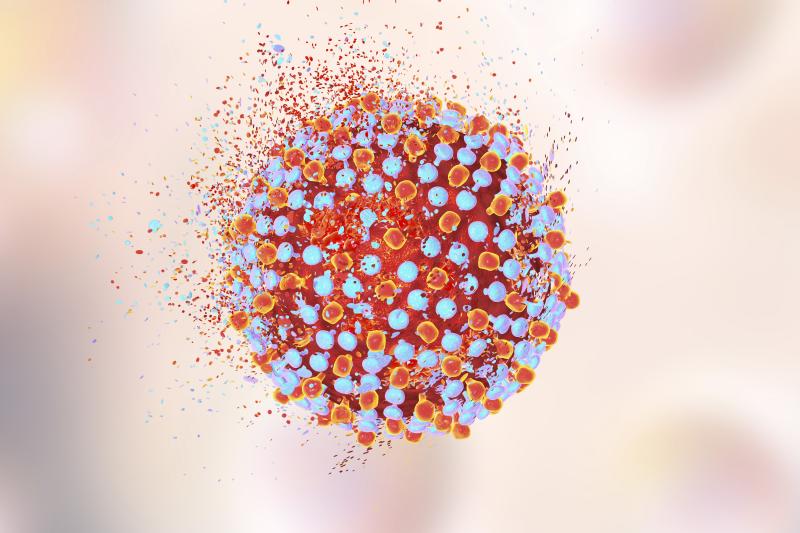
An end-of-treatment (EOT) HBsAg level 40 IU/mL appears to be a useful cutoff value for predicting hepatitis B virus (HBV) infection relapse following cessation of either entecavir or tenofovir disoproxil fumarate (TDF) treatment, as shown in a study. Specifically, low levels of EOT HBsAg and baseline HBV DNA or HBcrAg translate to reduced odds of having relapse.
To identify predictors of off-therapy HBV relapse and HBsAg loss, researchers collected data from 135 patients with HBsAg levels <100 IU/mL at EOT (entecavir, n=79; TDF, n=56) for a median 87 weeks for use as the development set. They also followed 108 patients from separately for a median 126 weeks, and the records were used as the validation set.
In the development group, the corresponding 5-year incidence rates of post-treatment virologic relapse (defined as a serum HBV DNA >2,000 IU/mL), clinical relapse (defined as alanine aminotransferase [ALT] >40 U/L and HBV DNA >2,000 IU/mL) and HBsAg loss were 40.9 percent, 32.5 percent and 47 percent. Baseline HBV DNA level and EOT HBsAg level were independently associated with relapse.
In the development group, virologic relapse within 5 years occurred more frequently in patients with EOT HBsAg of ≥40 vs <40 IU/mL (67.6 percent vs 17.3 percent; p<0.001), as did clinical relapse (57.6 percent vs 10.2 percent; p<0.001).
In the validation groups, patients with EOT HBsAg levels ≥40 vs <40 IU/mL likewise had significantly higher rates of virologic (80.5 percent vs 31.1 percent; p<0.001) and clinical relapse within 5 years (50.3 percent vs 14.2 percent; p<0.001).
Both virologic and clinical relapse rates within 5 years were low (<10 percent) in the group of patients with a combination of EOT HBsAg level <40 IU/mL and baseline HBV DNA level <5×104 IU/mL or baseline hBcrAg level <4 log U/mL in the development group.